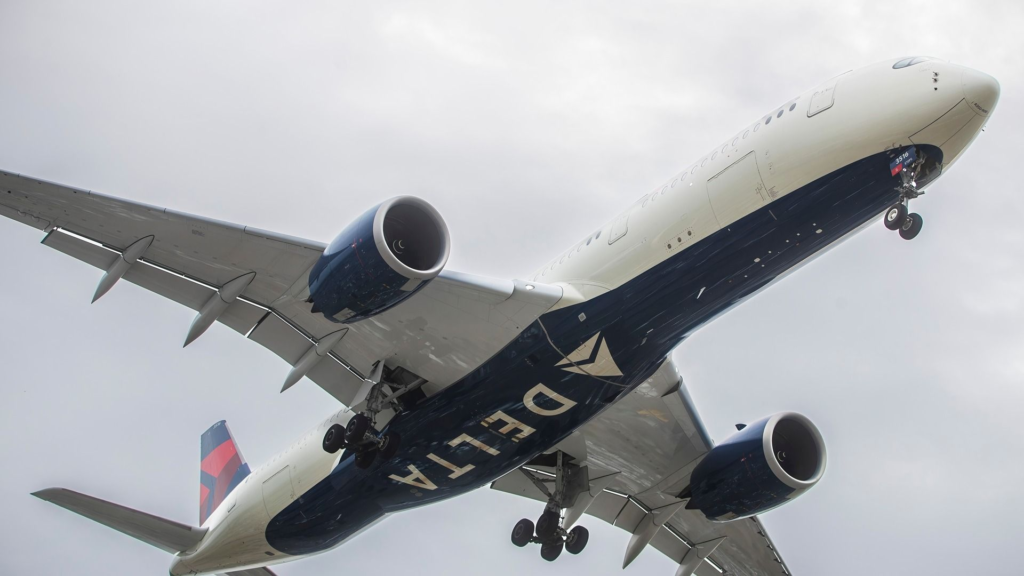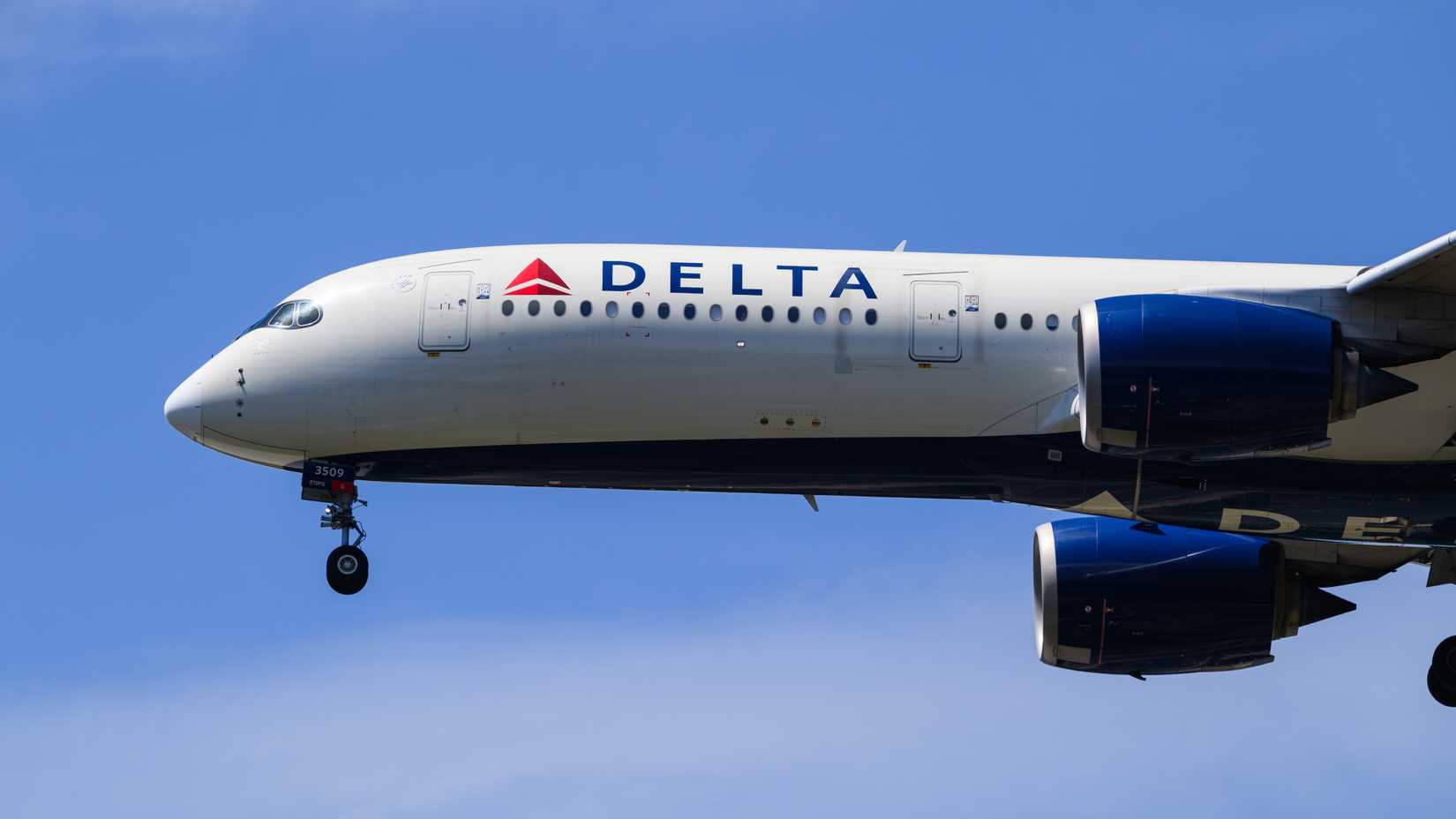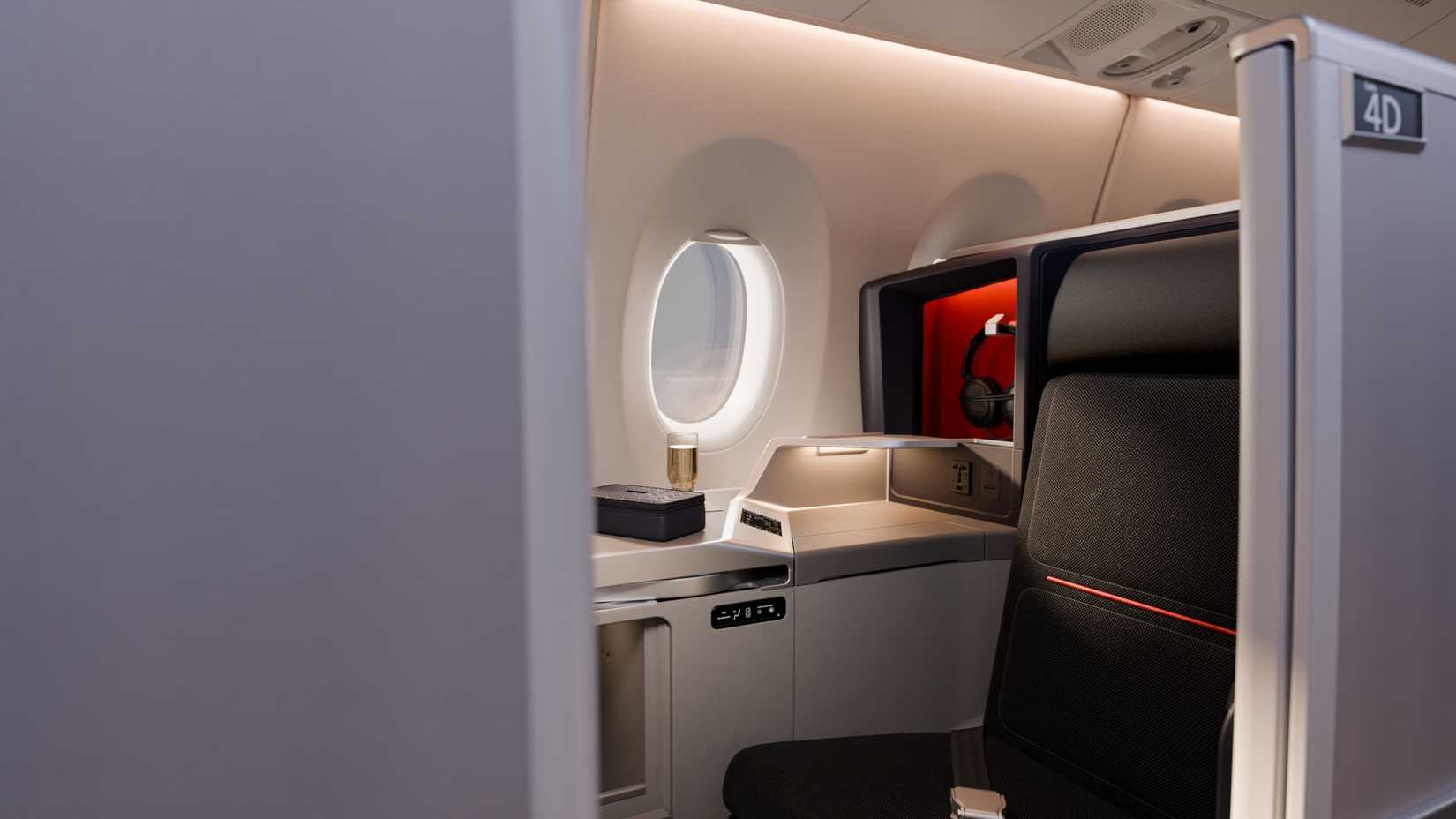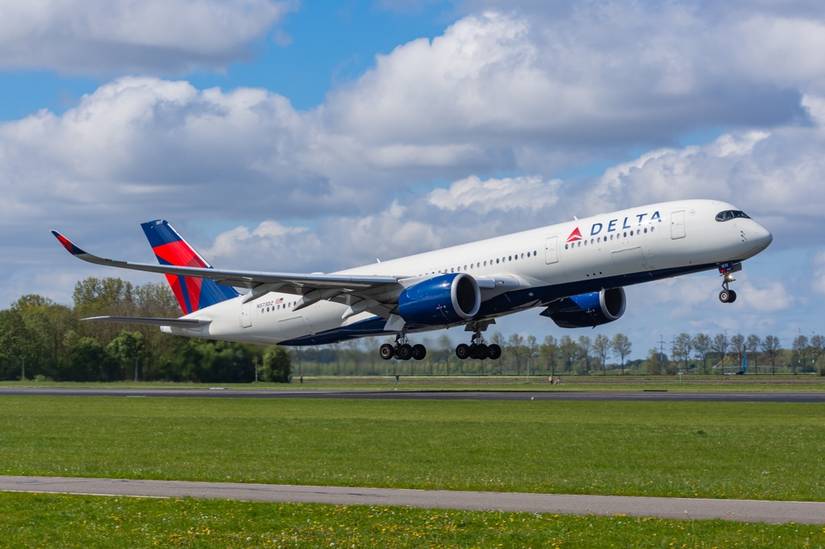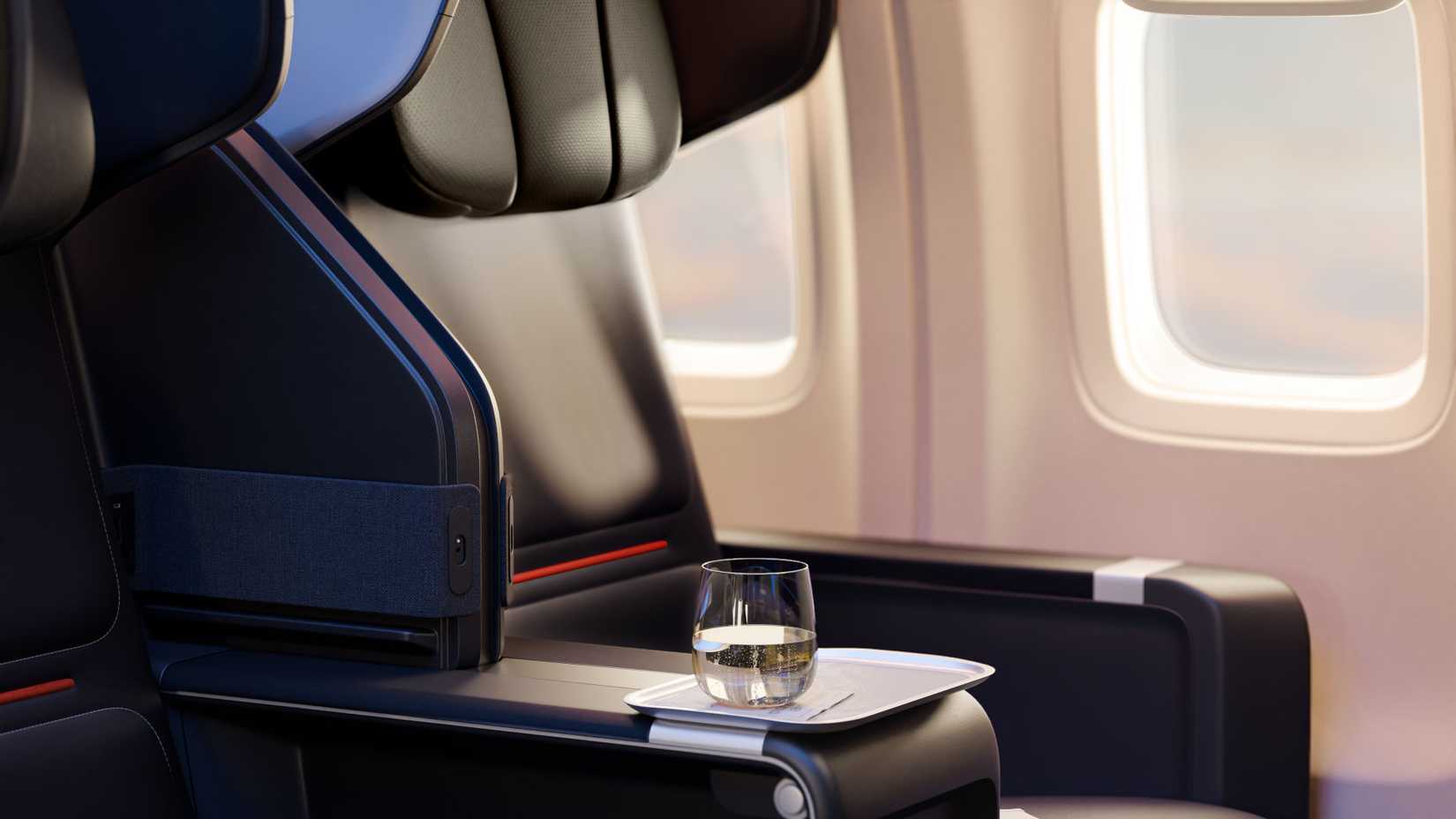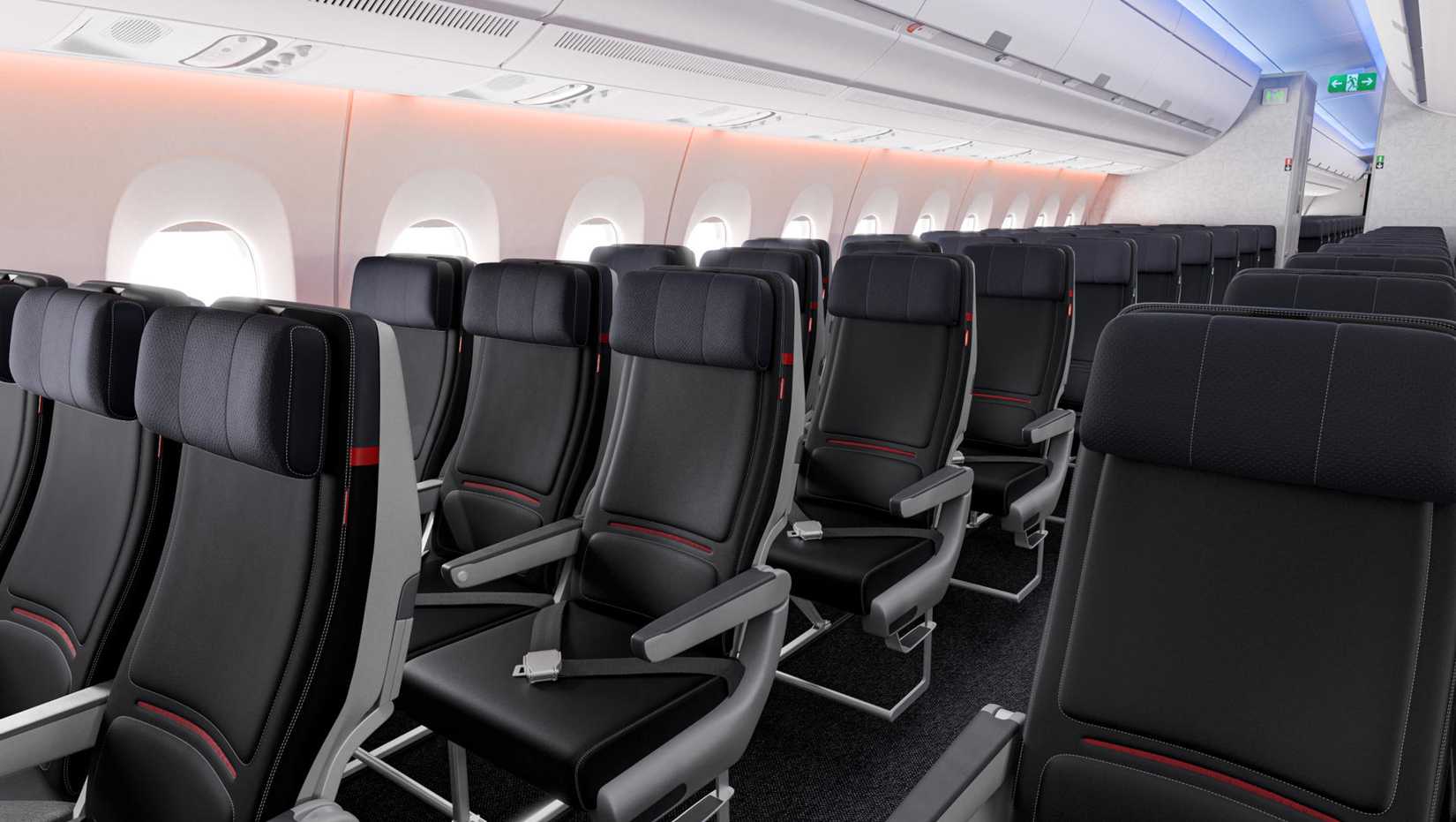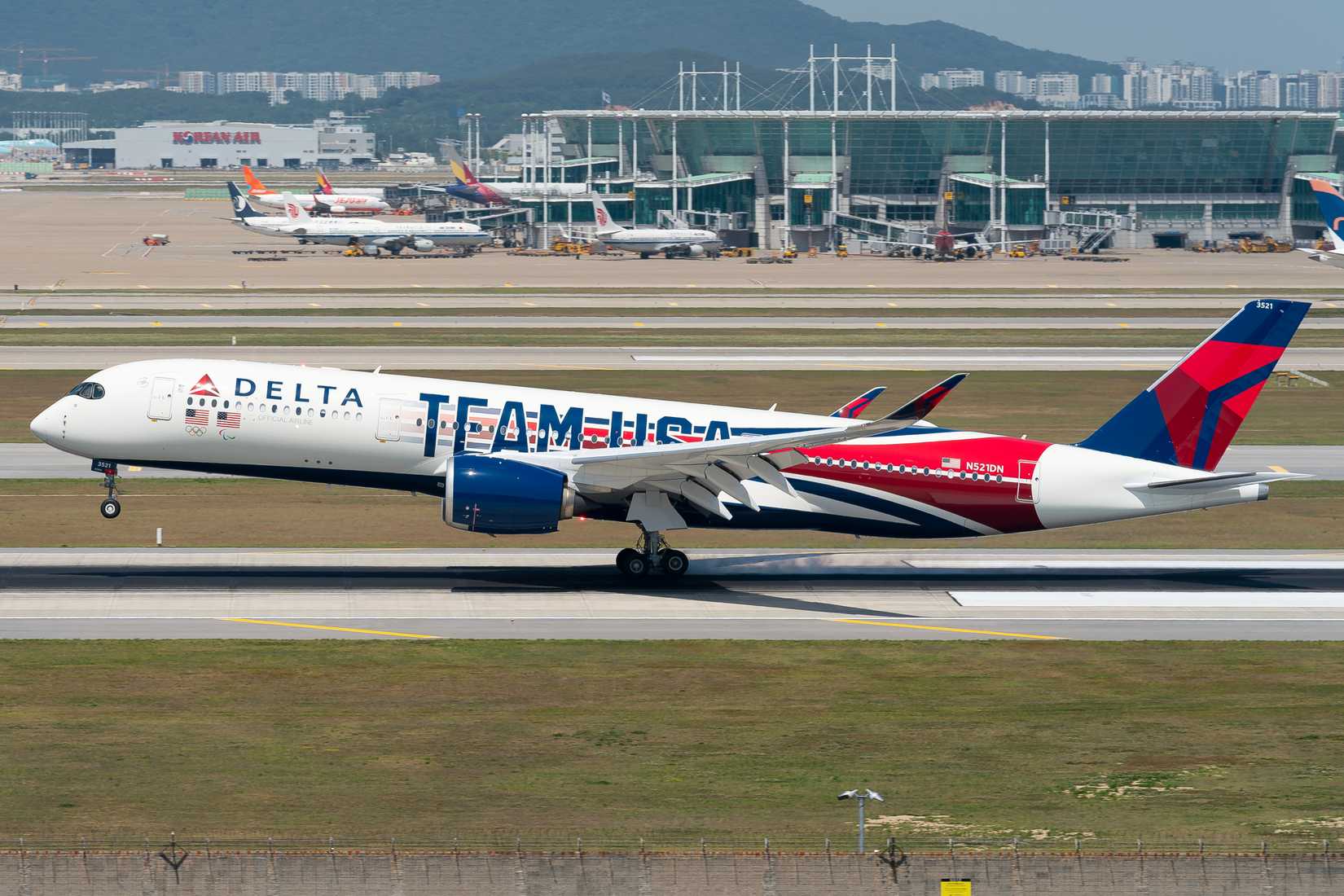![]() Delta Air Lines (NYSE: DAL) will be rolling out a fleet-wide cabin redesign, with the Boeing 757 set to debut the product in the fall of 2025, and the Airbus A350 will introduce the product shortly after. This product will offer upgraded cabin seating (including memory-foam cushions), warmer brand palettes, and phase-of-flight mood lighting that will help improve rest in-flight.
Delta Air Lines (NYSE: DAL) will be rolling out a fleet-wide cabin redesign, with the Boeing 757 set to debut the product in the fall of 2025, and the Airbus A350 will introduce the product shortly after. This product will offer upgraded cabin seating (including memory-foam cushions), warmer brand palettes, and phase-of-flight mood lighting that will help improve rest in-flight.
Tech added for the carrier includes USB-C type ports as well as wireless charging capabilities and an accessible gray-scale flight map. Bluetooth capabilities have also arrived at the carrier, and the crew spaces and galleys were further optimized to provide passengers with the highest quality of service. On Airbus A350s, Delta has elected to shift towards a higher-premium 275-seat layout while retiring its 339-seat ex-LATAM aircraft configuration by October 25, 2025, which was retrofitted to align with the new standards the airline is implementing. We analyze this decision and the factors motivating it in detail.
A Deeper Look At This Decision
Delta Air Lines is not just looking to refresh a singular premium cabin, but rather standardizing a new design language across the airline’s entire Airbus A350 fleet. The carrier will upgrade all cabins onboard its A350 and Boeing 757 fleets, including everything from Delta One to the main cabin. This program will debut initially on the Boeing 757 before the Airbus A350 follows suit for long and ultra-long-haul routes. The goal of this is to offer product uniformity for passengers, who will be able to recognize the same textures, lighting, and layout logic regardless of the specific aircraft type.
Delta One will receive soft, breathable wool-blend seat coverings and refined trim, while Delta Premium Select will see a slew of other upgrades, which include a deeper recline, memory-foam cushions, device storage, and premium finishes. Delta Comfort+ and Main Cabin will inherit a relatively calm palette, upgraded cushions, refreshed sidewalls, and lighting designed to improve passenger comfort.
The areas accessible to the crew, including galleys, jump seats, and rest modules, are also redesigned for workflow and comfort, which acknowledges crew experience as a lever for the overall quality of service. The unifying thread is a home-like atmosphere that will favor tactile materials, warmer brand colors, and impressive interior design elements.
Game-Changing Premium Design Elements
Delta Air Lines brings a unique upgrade philosophy to the table, with the airline focused on touch, sight, and utility as key pillars of its interior transformation efforts. The airline will push to use tactile materials as much as possible, including breathable textiles and memory-foam cushions, which will reduce overall temperature swings and pressure points, especially on long sectors, while refreshing lavatory surfaces and flooring will improve cleanliness and passenger perceptions of onboard service.
Second, the airline is preparing to transform its lighting, with phase-of-flight mood programs set to guide the cabin using warm, candle-adjacent tones at mealtimes and sunset amber lighting for gentle morning ramps to wake up. The airline is looking to improve circadian cues and help passengers better manage jet lag. Similar improvements have also been made in crew areas, offering improved airflow and reduced turbulence impact.
Third, every cabin will receive improved power, and wireless charging will be available in select areas, allowing upgrades like an industry-first grayscale map offering improved visibility for those with visual impairments. This design prioritizes practical micro-interactions, making the cabin feel more like a home in the skies than an aircraft for passengers. These improvements have been made across cabins, helping offer passengers an exceptional experience regardless of where on the plane they may be sitting. These shifts in cabin design will help the airline continue to improve the reputation of its premium products.
Expanding An Already Diverse Premium Product Lineup
Demand has also shifted towards wanting both premium economy and true premium cabins, as well as extra-legroom seats. On ultra-long-haul services to Asia and Southern Africa, where rest and wellness are most important, Delta Air Lines is enhancing this mix by expanding its offerings in both Delta One (the airline’s business class) and Premium Select (the airline’s long-haul premium economy product).
Strategically, a higher premium traffic ratio supports revenue quality for the carrier, with more seats opening up and monetizing corporate demand and high-yield leisure traffic. From an operational perspective, premium heavy layouts can make boarding a smoother process, as lavatory and bin conflicts will be somewhat mitigated. From a financial perspective, premium cabins offer more resilient unit revenue, especially when yields in economy are choppy. These are also aligned with loyalty economics, including perceived product quality improvements that drive continued engagement.
This unique design offers more than just aesthetics but also a yield-centered strategy. The airline can lift its baseline feel in every cabin while distinguishing itself from higher tiers with premium materials and improved lighting. This will help the airline continue to fill premium seats without losing any value in the main cabin. Delta wants to continue growing the gap between it and its nearest competitors, making it a formidable player in the market for years to come.
Why Is Delta Air Lines Retrofitting Such Relatively Young Jets?
Delta’s Airbus A350 fleet is not old, but the fleet’s age profile is relatively heterogeneous, with some ex-LATAM airframes arriving with a high-density 339-seat layout and outdated products that diluted the brand’s consistency problems. Retrofitting the airline’s fleet solves three different problems at once. For starters, the airline offers product coherence with this model. This removes customer surprises for those who end up on ex-LATAM airframes,
These aircraft configurations also help the airline better cater its equipment to the missions that it is operating, pairing a higher maximum takeoff weight (MTOW) with weight-saving changes. The aircraft suits ultra-long-range missions where takeoff performance, payload, and fuel burn are extremely critical. This makes the aircraft exceptionally well-suited to the kinds of routes that Delta continues to expand into. Lower structural weight and a smaller number of seats will expand dispatch reliability on long stage lengths, helping protect schedule integrity and improving the premium experience.
|
Delta Retrofitted Aircraft Cabin |
Number Of Seats |
|---|---|
|
Delta One |
40 |
|
Delta Premium Select |
40 |
|
Main Cabin |
195 |
The airline has recently converted from 339 economy-heavy seats to boost premium capacity in the core market segments, cushioning demand dips and helping to enhance the value of the airline’s loyalty program. In short, retrofits allow the airline to improve its brand, network, and unit economics, all while optimizing the airframe for Delta’s longest routes.
Why Do Premium Cabins Matter So Much For Delta Air Lines?
Premium cabins have slowly become a more and more critical element of Delta’s economics and its brand structure. From a financial perspective, Delta One and Delta Premium Select continue to generate significantly more revenue per square foot than the main cabin, which lifts revenue per available seat mile and margins while smoothing cyclicality, with corporate and high-yield leisure demand becoming more resilient than economy seating. From a strategic perspective, premium cabins help expand loyalty economics, with medallion travelers and co-branded cardholders valuing upgrade paths and award availability, further pushing the carrier to add more premium seating.
Ensuring product parity with ![]() United Airlines, American Airlines, and other foreign flag carriers is a critical element of any long-haul trunk routes. This offers a differentiated hard/soft product that sustains fairs and corporate contracts. From an operational perspective, premium-heavy layouts will improve service flows, reduce congestion at lavatories, and enhance overall on-time performance.
United Airlines, American Airlines, and other foreign flag carriers is a critical element of any long-haul trunk routes. This offers a differentiated hard/soft product that sustains fairs and corporate contracts. From an operational perspective, premium-heavy layouts will improve service flows, reduce congestion at lavatories, and enhance overall on-time performance.
From a network perspective, aircraft with high-premium configurations allow for ultra-long missions to be heavily saturated with premium demand. Across the board, these new premium cabins help the airline improve its footprint and brand identity, allowing the airline’s profit engine to continue turning and the company’s competitive moat to continue building.
So What’s The Bottom Line?
At the end of the day, legacy carriers like Delta Air Lines have become increasingly focused on catering to high-volume, high-yield leisure traffic. This comes in addition to the high-spending business travelers who have historically provided the largest source of Delta’s overall returns.
Recently, airlines have begun to compete more aggressively over the highest-spending premium travelers, doing so by adding more lavish premium cabins. Unsurprisingly, Delta has chosen to do so, especially when it comes to the carrier’s flagship widebody jet.
Over the next few years, we will eventually get some idea whether this transformation was worthwhile. Continued investment in its fleet will result in the airline having strong performance going forward, especially in premium cabins.


